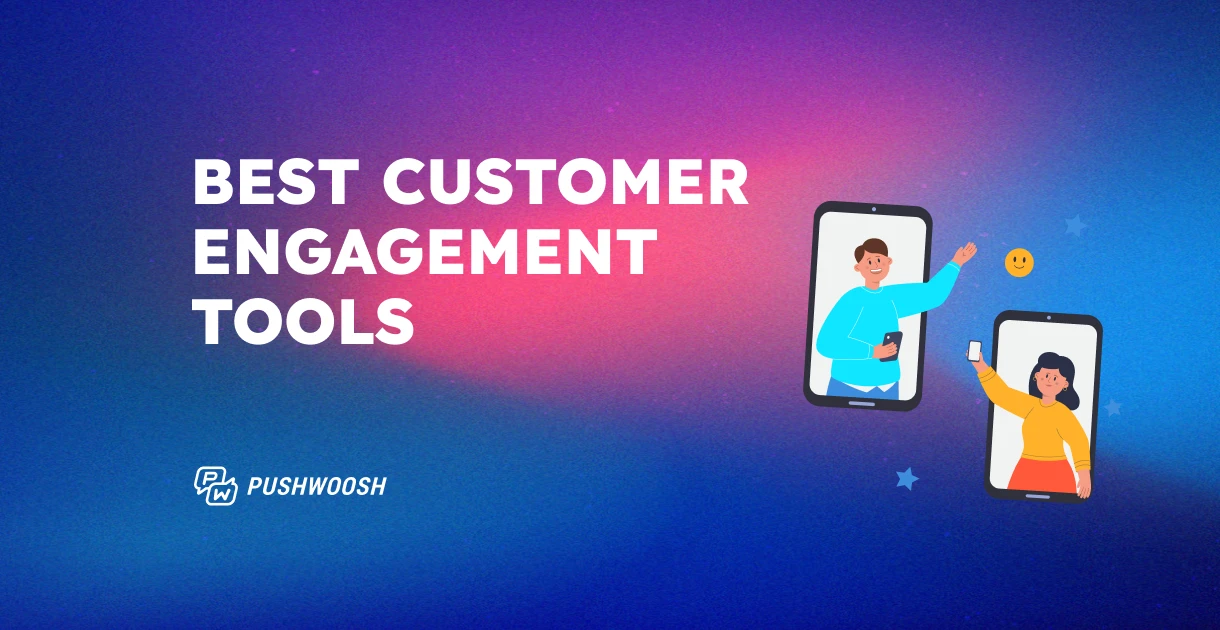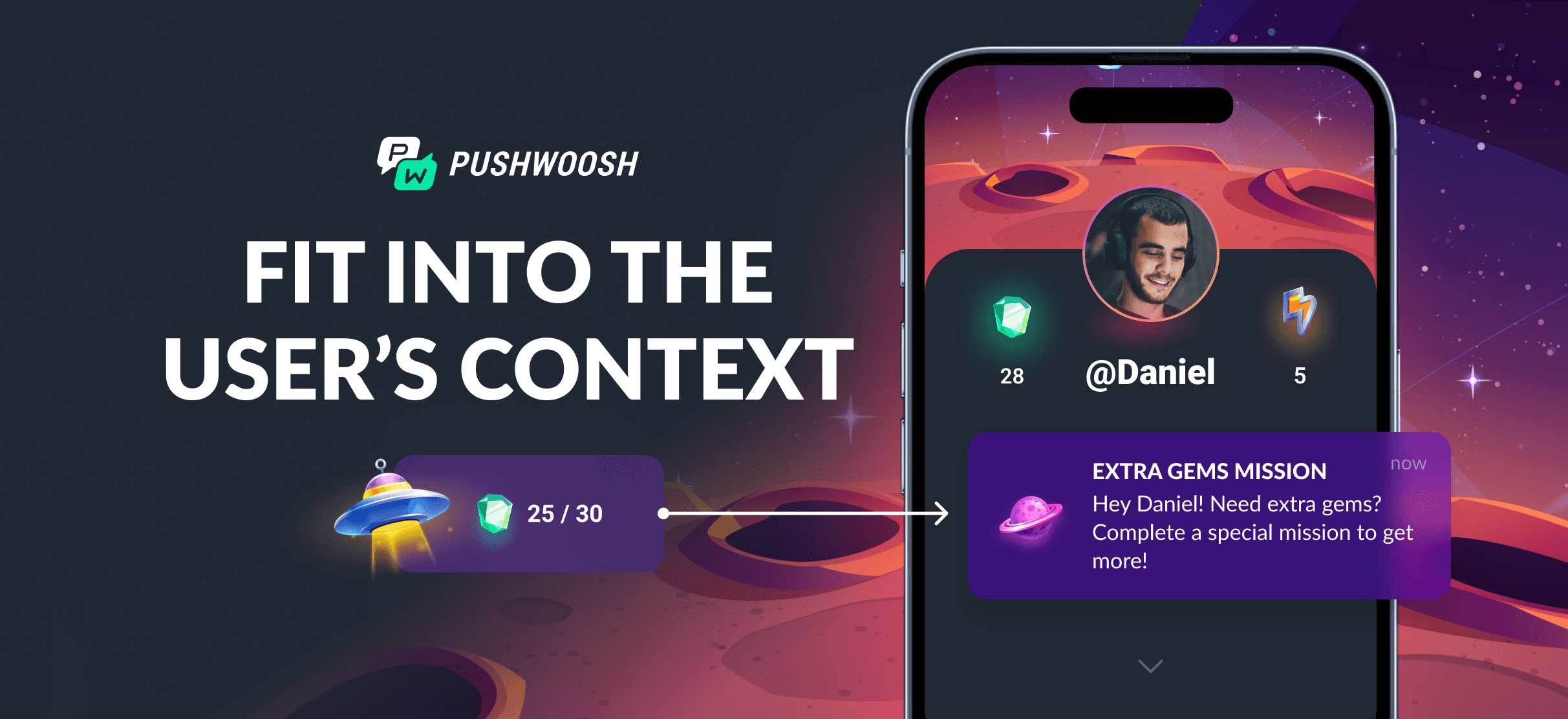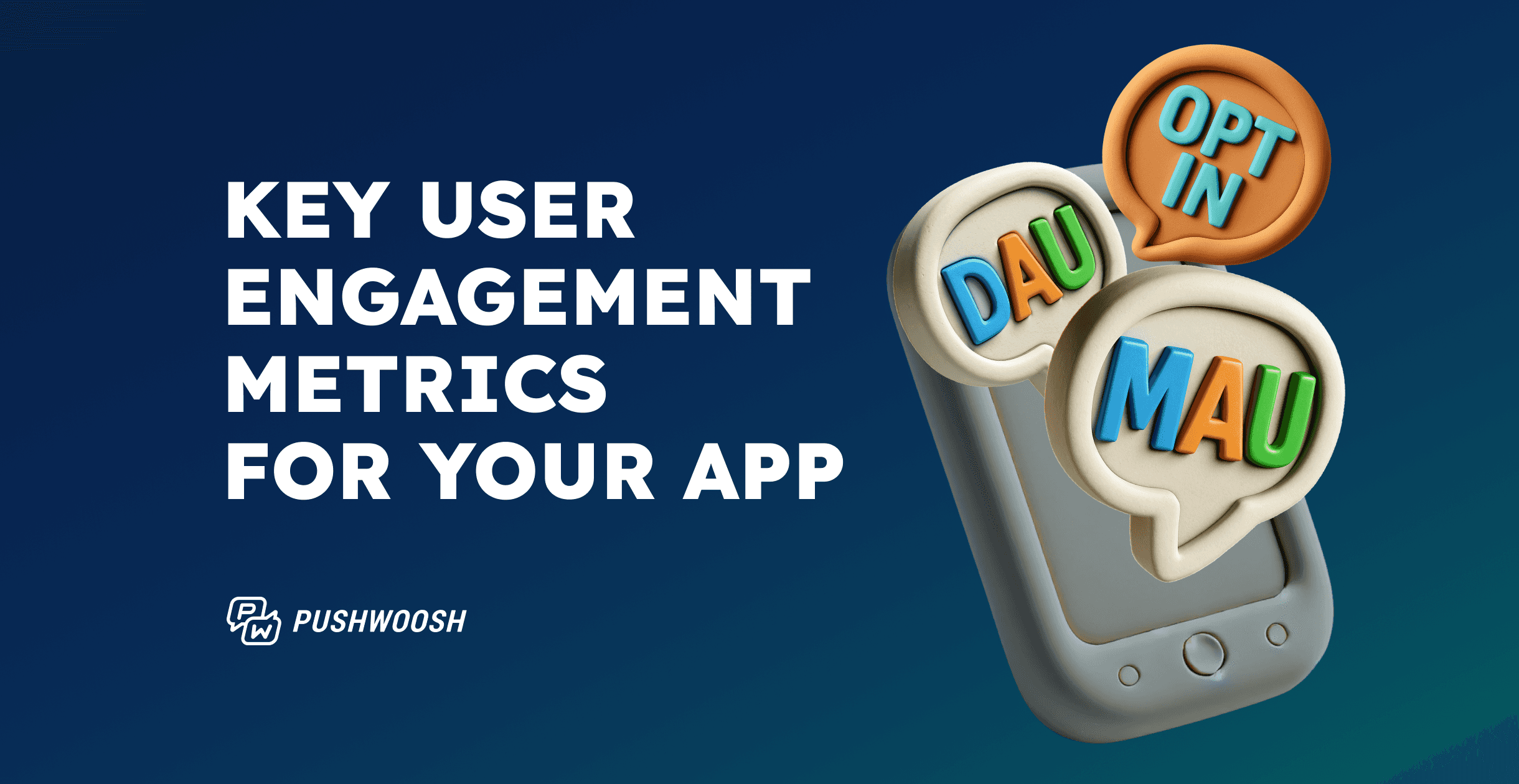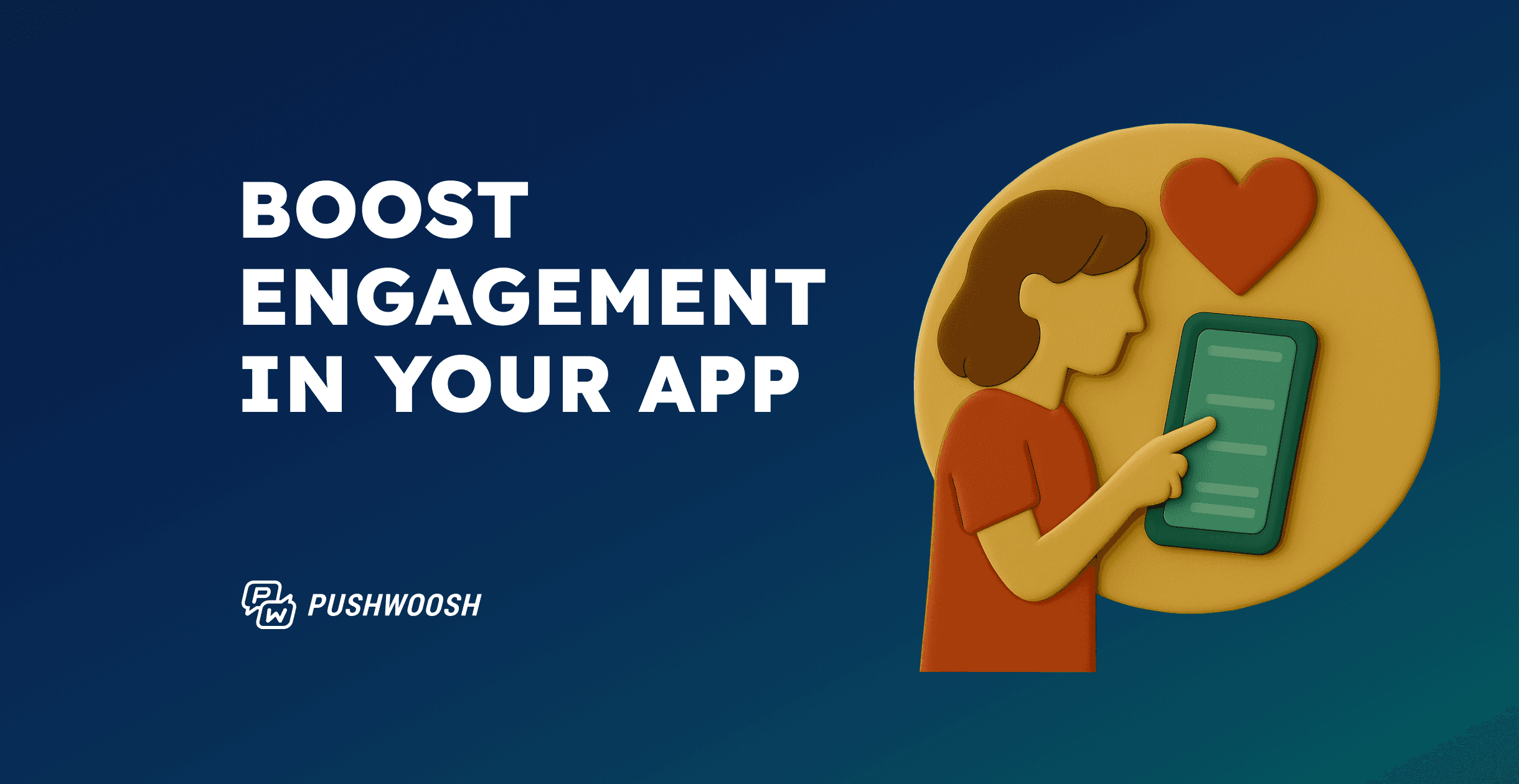How to drive real-time engagement in news & media apps [Case studies]
For news, sports, and weather apps, timing is everything. And it’s more than just sending breaking news at a lightning speed — it’s about creating immediate, interactive experiences that keep users engaged across the app, web, and TV.
We’ve analyzed how leading apps — GB News, SPORT1, and FIBA — drive real-time engagement and turn speed into user retention. Spoiler: it’s all about efficient automation and personalization at scale.
📰 GB News: Real-time engagement around breaking news & live debates
Challenge:
As one of the UK’s newest TV channels, GB News faced tough competition from established broadcasters like Sky News. To compete, they needed to deliver breaking news and feature stories faster, without interrupting editorial workflows.
Solution:
GB News integrated Pushwoosh with their CMS via API, creating a single push UI that allowed editors to trigger push notifications right from where they publish content.
This meant the editorial team could broadcast updates in real time: for example, during live debates, they could send pushes to invite viewers into the conversation while the debate was still on air.
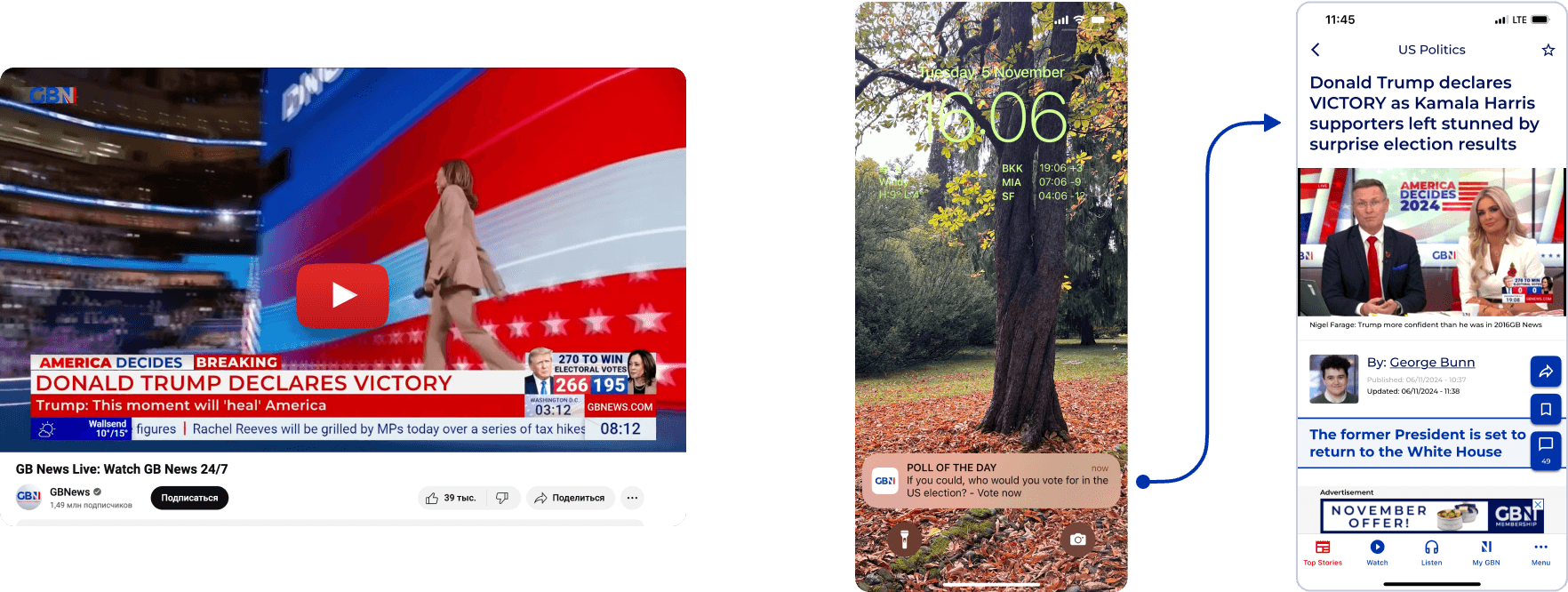
Beyond speed, the team utilized data from Piano Analytics, integrated with Pushwoosh, to A/B/n test the optimal send times: during live events, before, or after — continually optimizing for engagement.
Results:
✅ Over 12 million push notifications sent daily
✅ Audience growth to 1.2 million push subscribers
✅ D30 retention at 8.55%, nearly meeting the media category benchmark of 9.1%
Key takeaway:
Speed should come first in both delivery and execution: the process must be seamless for editors to act quickly and turn real-time push notifications into real-time engagement.
⚽ SPORT1: Driving app traffic with live updates & personalization
Challenge:
SPORT1, a leading multichannel sports platform in German-speaking countries, has built its strategy around an in-app advertising model. For them, real-time engagement translates directly into revenue, as more app opens mean more ad impressions.
The challenge? Competing for fans’ attention during fast-moving live events, as well as keeping them engaged when the game is over.
Solution:
SPORT1 built a multitouch engagement strategy:
During sports events: Real-time push notifications (sent via Pushwoosh API) deliver live tickers — goals, red cards, and breaking match updates.
Before and after events: Editorial pushes distribute in-depth articles and pre/post-game analysis.
To personalize the user experience: Onboarding in-app messages ask users to select their favorite sports or teams, so fans receive only the updates they actually care about. This way, engagement stays high and opt-outs are low.
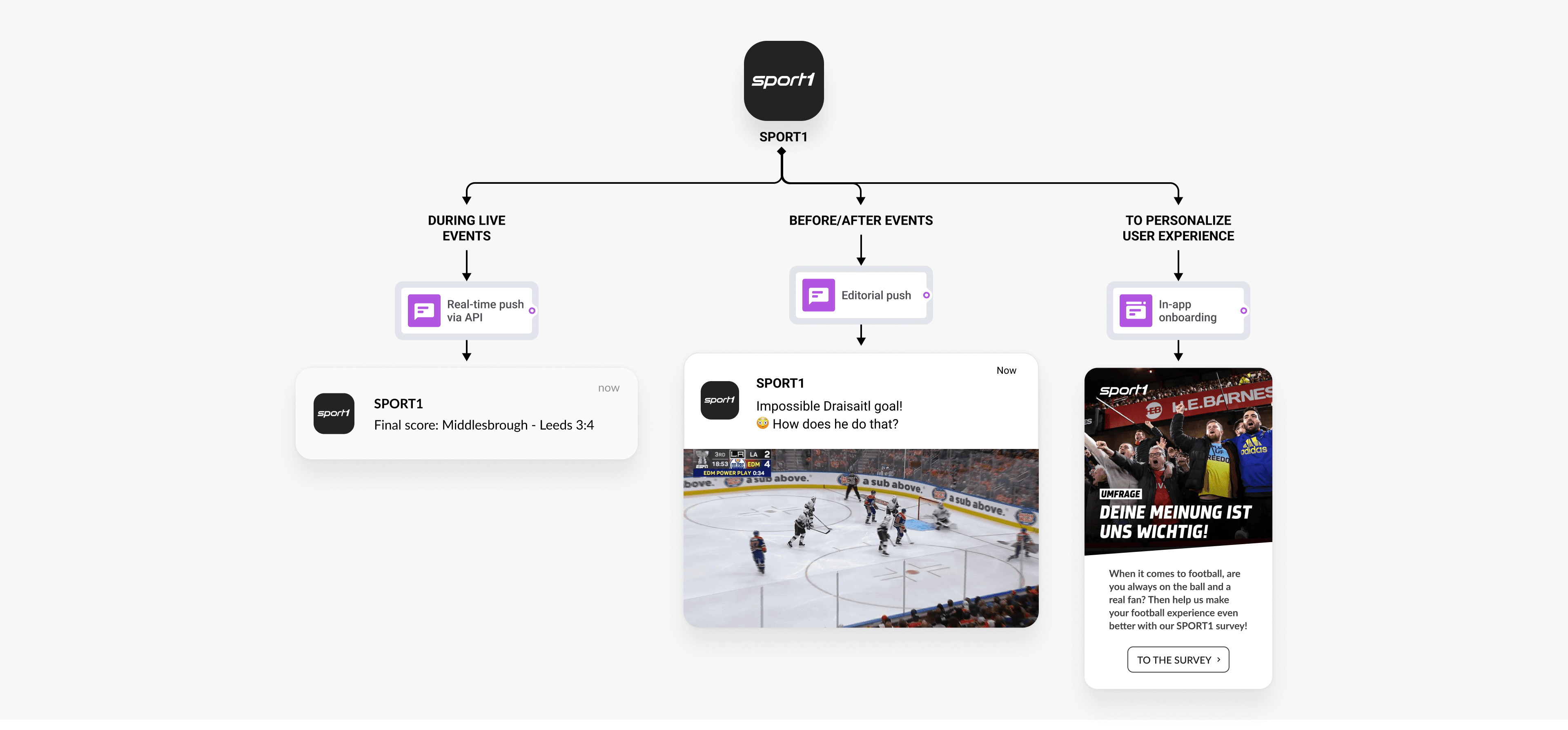
Results:
✅ Over 5 million monthly app opens
✅ Push open rates of up to 8% — 2–3× higher than the industry median for news apps
Key takeaway:
Combine real-time push notifications with editorial content distribution, and, most importantly, let users personalize their experience to make every push relevant — and engaging.
⚡ ONE.co.il: Lightning-fast sports updates to keep fans informed and engaged
Challenge:
ONE.co.il, a leading Israeli sports outlet, needed to keep fans engaged during live matches while competing with other platforms for speed and accuracy. Sports fans demand instant updates on scores, goals, and hot news — delays mean lost engagement.
Solution:
Using Pushwoosh High-Speed Delivery, ONE.co.il sends real-time push notifications at least 100x faster than the average.


Results:
✅ Lightning-fast delivery keeps fans engaged throughout matches: high-speed push notifications achieve a 10–20% CTR
✅ With strong retention and engagement, the ONE.co.il app’s audience continues to grow, reaching 250k monthly active users.
Key takeaway:
In live sports coverage, speed is your competitive edge. Talk to our team about integrating Pushwoosh High-Speed Delivery to ensure fans get the news first — from you, not your competitors.
🏀 FIBA: Engaging global basketball fans with real-time, geo-targeted push notifications
Challenge:
FIBA, the International Basketball Federation, faced a unique challenge: basketball fans around the world care about very specific teams, matches, and national leagues, and timing matters most during live games.
To maximize real-time fan engagement, FIBA needed a way to send time-sensitive, personalized updates without overwhelming users with irrelevant notifications.
Solution:
FIBA leveraged Pushwoosh’s geo-targeting and high-speed delivery to:
Send instant live game alerts (scores, big plays, match start) during international tournaments.
Personalize notifications to each user’s location and favorite national teams, so fans only receive updates about games that matter to them.
Combine live updates with editorial content, such as match previews and highlights, to keep engagement going before and after games.
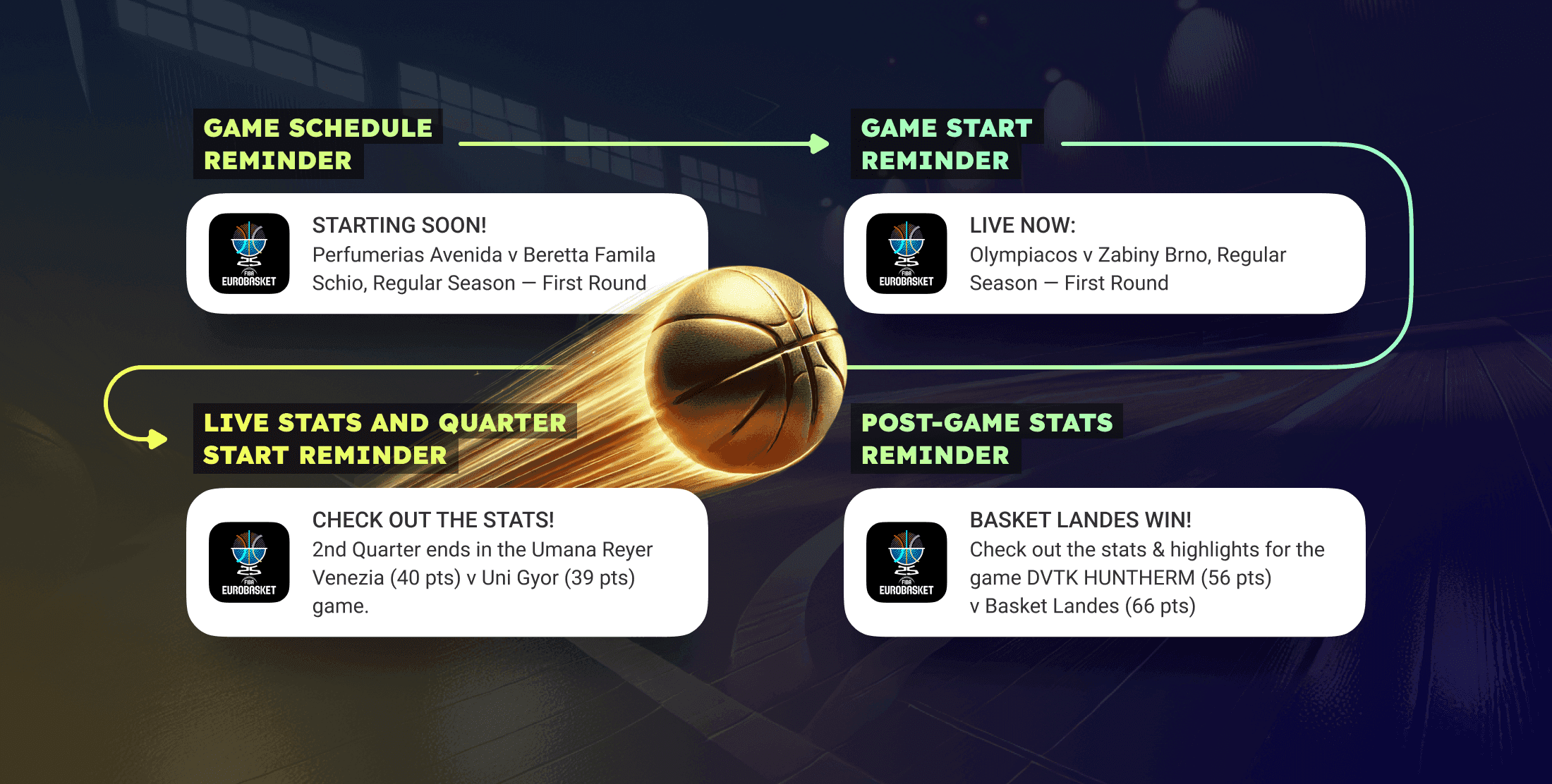
To make this scalable across continents and languages, the FIBA team uses:
Pushwoosh API to trigger notifications automatically from live data feeds.
Pushwoosh Control Panel for manual editorial pushes when they want to drive traffic to special content.
Results:
✅ Higher engagement during live tournaments, especially among geo-targeted users.— push CTR reach 9%
✅ Increased app opens during peak competition days.
✅ Fans stay connected in real time without feeling spammed.
Key takeaway:
For global sports & media brands, geo-targeting adds another (very effective!) level of personalization and drives real-time fan engagement.
Common strategies for real-time engagement
Looking across the case studies, some patterns stand out.
These strategies help news & media apps move from broadcasting content to consistently engaging users in real time.
API-triggered push notifications for speed
Instead of waiting for manual approval or batch sends, successful apps connect real-time data feeds (like live scores, breaking news, weather changes) directly to their push notification service (like Pushwoosh) and send out notifications within seconds.
Seamless integrations for editorial & marketing teams to act instantly
While APIs handle automation, human teams should be able to craft compelling content without leaving their workflows.
When push notifications are integrated with CMS, analytics, and other tools, time-sensitive messages can be sent out instantly in response to breaking news or opportunities.
User-controlled personalization to keep relevance high
Create a pact with the user: in exchange for their attention, you promise to only send them content they have explicitly expressed interest in. This turns notifications from an interruption into a welcome service.
A/B testing to optimize timing and copy
A successful real-time engagement strategy is never static; it is constantly refined through data.
The best timing (before, during, or after live events) or tone of the push copy can be determined though rigorous A/B testing.
Thinking of push not just as marketing, but as part of the product
This is the most critical mindset shift.
A “marketing” push notification serves the company’s goals (e.g., “Check out our new feature!”).
A “product” push serves the user’s goals (e.g., “It’s about to rain where you are.”).
Consider real-time push notifications a core feature of your app — and users won’t ignore them or opt out.
Build real-time engagement like a top app
For news, sports, and weather apps, real-time engagement is what keeps users opening your app instead of a competitor’s.
Personalization, editorial control, and instant delivery empower the world’s leading news and media apps turn live interactions into lasting loyalty.
See how real-time engagement can work for your app →
FAQ on real-time engagement
📌 1. What is real-time engagement in news and media apps?
Real-time engagement means interacting with users the moment a relevant event happens — for example, breaking news, a live sports score, or a sudden weather alert.
Real-time engagement relies on push notifications, in-app messages, and sometimes live content feeds to make the user an active participant, not just a passive recipient.
📌 2. How do real-time push notifications increase user engagement?
Push notifications bring users back to the app by delivering timely, personalized content directly to their devices. When notifications are delivered in real time and are relevant, users are more likely to click, open the app, explore content, and keep the app installed, improving the number of daily active users (DAU) and retention rates.
📌 3. How does real-time engagement actually increase revenue for a media app?
Real-time engagement directly impacts revenue by increasing the key metrics that monetization models rely on.
For example, an app using an in-app advertising model designs its entire strategy around driving traffic to the app. Highly relevant, real-time push notifications get more users to open the app and spend time there. This creates more advertising opportunities for the app, leading to higher revenue.
📌 4. What are some real-time engagement strategies used by top apps?
As shown in our case studies:
API-triggered notifications based on live events
User-controlled personalization to send only relevant updates
Editorial pushes combined with automated live alerts.
A/B/n testing different send times and messages to see what drives the most engagement.
📌 5. How fast should push notifications be sent for breaking news or live events?
Ideally, within seconds of the event. Late notifications risk being ignored because users may have already seen the news elsewhere.
Using tools like Pushwoosh API and the high-speed push notifications feature helps automate real-time delivery with minimal developer effort.
📌 6. How can a news app handle millions of real-time alerts without crashing?
This is a significant technical challenge that requires a scalable infrastructure. Not every customer engagement platform can handle it.
Pushwoosh offers its customers an API-first approach. Instead of calculating every user segment on their own backend, your system can simply trigger an API call to Pushwoosh. The complex workload of matching users to the right alerts and sending the messages at scale happens on the Pushwoosh side. This keeps the load on your internal resources minimal and ensures reliable, high-speed delivery.
📌 7. How can I personalize real-time notifications without overloading users?
Try and combine:
Asking users for preferences during onboarding (favorite teams, topics).
Geo-targeting (for weather or local news).
Limiting frequency to ensure users receive only relevant alerts.
Avoid hyper-specific details in the push message that could become inaccurate; focus on what’s useful and timely.

![How to drive real-time engagement in news & media apps [Case studies]](/content/images/2025/07/Real-time engagement for news and media apps - Pushwoosh blog.png)
